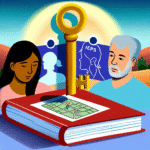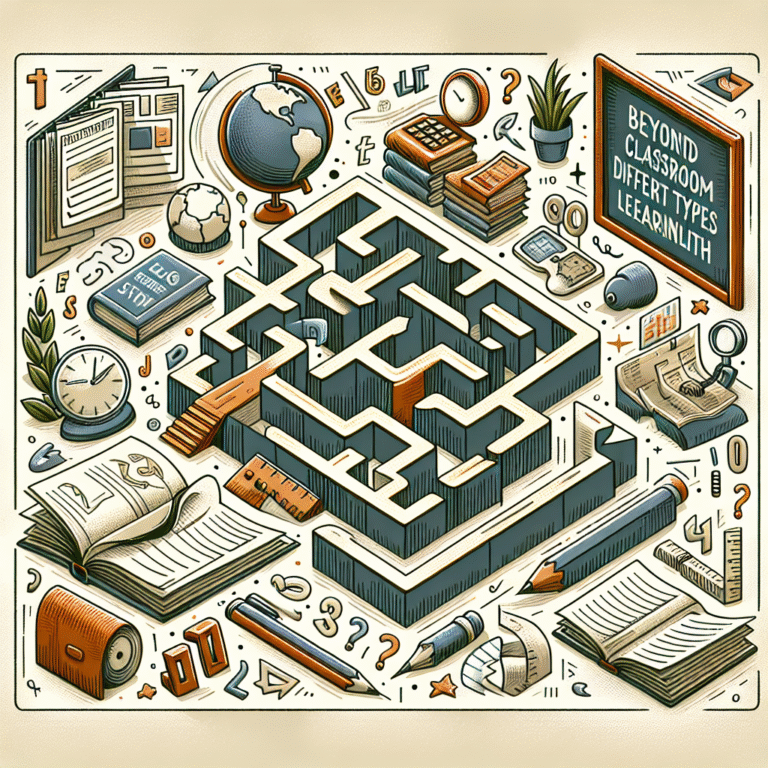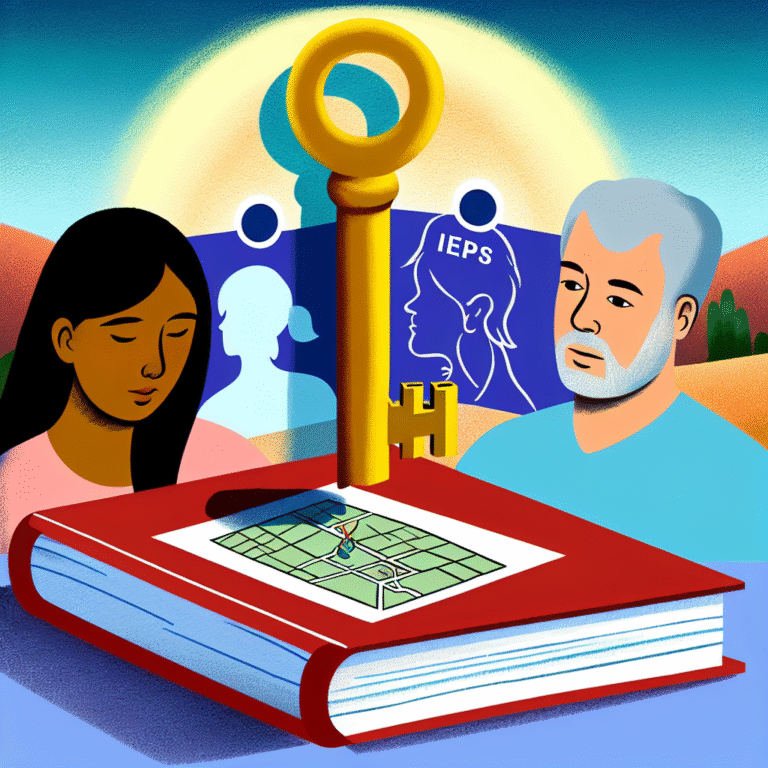
From Frustration to Hope: Essential Strategies for Managing Depression in Individuals with Learning Disabilities
Introduction
Understanding the complex interplay between learning disabilities and mental health is crucial in today’s landscape. As we delve into the realities faced by individuals with learning disabilities, one significant issue emerges: depression. Understanding these struggles is not just about identifying a problem—it’s about fostering hope. This article explores From Frustration to Hope: Strategies for Managing Depression in Individuals with Learning Disabilities, providing insights, strategies, and real-world applications to empower those that feel trapped in despair.
The Relevance of the Topic
Individuals with learning disabilities often navigate a world that can feel disheartening. Academic pressures, social challenges, and misperceptions can lead to feelings of inadequacy and despair. Recognizing and addressing depression in this population is not merely a clinical need—it’s a humanitarian one. The stakes are high; untreated depression can lead to long-term emotional and psychological consequences, stifling not only academic potential but personal growth and happiness.
Understanding the Link: Learning Disabilities and Depression
Definition and Scope
Learning disabilities (LD) are neurologically-based processing difficulties that can affect skills such as reading, writing, and math. Depression, on the other hand, is a mental health disorder characterized by persistent sadness and a lack of interest or pleasure in activities once enjoyed. The connection between the two may appear indirect but is starkly clear—individuals with LD face unique stressors that can heighten their risk of developing depression.
Statistics at a Glance
| Aspect | Individuals with LD | General Population |
|---|---|---|
| Risk of Depression | 30-60% | 10-20% |
| Academic Underachievement Rate | 50% | N/A |
| Social Isolation | High | Moderate |
The above statistics provide a sobering perspective on the mental health crises that often accompany learning disabilities. The heightened risk of depression among this group highlights an urgent need for focused strategies.
Case Study 1: Alex’s Journey
Alex is a 15-year-old diagnosed with dyslexia and ADHD. Despite his intelligence, he struggles academically, leading to feelings of frustration and loneliness. After experiencing episodes of depression, Alex’s parents sought help.
Analysis
Alex’s story is emblematic of many individuals with learning disabilities. His intelligence is overshadowed by systemic academic challenges, leading to a sense of hopelessness. Through therapy and specialized assistance, Alex learned coping strategies that changed his outlook—connecting him with peers and engaging with motivational resources.
Strategies for Managing Depression
Transitioning from frustration to hope requires actionable strategies tailored to the unique needs of individuals with learning disabilities.
1. Early Recognition and Intervention
Understanding the signs of depression is crucial. Symptoms such as withdrawal, irritability, or decreased academic performance should serve as red flags.
- Tip: Regular assessments by educators and mental health professionals can create a proactive rather than reactive approach.
2. Personalized Learning Approaches
Incorporating personalized education plans can dramatically impact self-esteem and performance.
- Example: Implementing multisensory learning techniques for students with dyslexia can enhance engagement and reduce frustration.
3. Emotional Regulation Techniques
Teaching emotional regulation can empower individuals to manage their emotional states effectively.
- Mindfulness Techniques: Activities such as meditation and yoga can help individuals ground themselves during moments of distress.
4. Building Support Systems
Creating a robust support network is vital in managing depression.
- Peer Support Groups: Encourage participation in peer-led support groups where individuals can share their experiences and strategies for coping.
5. Professional Guidance
Accessing counseling and therapy can provide essential tools for managing depression.
- Cognitive Behavioral Therapy (CBT): Evidence shows CBT can be particularly effective for individuals with learning disabilities, as it focuses on changing negative thought patterns.
6. Engage in Creative Outlets
Artistic expression can lead to emotional healing and self-discovery.
- Activities: Encourage involvement in art, music, or writing programs, allowing individuals to express their feelings in constructive ways.
Case Study 2: Samantha’s Resilience
Samantha, a college student with a learning disability, faced severe anxiety and depression as she struggled with academic pressures. With the help of a counselor, she developed coping strategies and became involved in a local art program.
Analysis
Samantha’s experience showcases the therapeutic potential of creative expression. By integrating her struggles with artistic endeavors, she not only found solace but also community. This multifaceted approach can provide significant relief to those feeling overwhelmed.
Table of Strategies at a Glance
| Strategy | Description | Expected Outcome |
|---|---|---|
| Early Recognition | Regularly assess for signs of depression | Proactive mental health management |
| Personalized Learning Approaches | Tailor education strategies to individual needs | Increased engagement and self-esteem |
| Emotional Regulation | Teach mindfulness and coping mechanisms | Better emotional control |
| Building Support Systems | Encourage peer support and family involvement | Stronger social connections |
| Professional Guidance | Provide therapy options such as CBT | Improved mental health |
| Engage in Creative Outlets | Foster involvement in art and creative activities | Emotional expression and healing |
From Frustration to Hope: The Inspirational Journey
Transitioning from frustration to hope is not merely about symptom management; it is about cultivating a positive, fulfilling life. Integrative approaches that include education, emotional support, and personal development make the journey not just bearable but enriching.
The Role of Families and Educators
Families and educators play pivotal roles in fostering a supportive environment. Communicating openly about emotions and challenges, celebrating small victories, and promoting resilience can create a powerful foundation for individuals coping with learning disabilities and depression.
Conclusion
From Frustration to Hope: Strategies for Managing Depression in Individuals with Learning Disabilities isn’t just about strategies; it’s about transforming lives. The journey may be challenging, but with the right tools, support, and understanding, individuals can move from despair to a hopeful and enriched experience. Remember, small steps can lead to significant changes.
FAQs
1. What are common signs of depression in individuals with learning disabilities?
Common signs include changes in mood, withdrawal from social interactions, decreased academic performance, and changes in sleep or appetite.
2. How can families support individuals with learning disabilities?
Families can foster an understanding environment, encourage open communication, and be proactive in seeking professional help when necessary.
3. Are there specific therapies effective for those with learning disabilities?
Cognitive Behavioral Therapy (CBT) has shown effectiveness in managing depression among individuals with learning disabilities by addressing negative thought patterns.
4. What role does self-esteem play in managing depression?
Self-esteem is crucial; enhancing self-efficacy can reduce feelings of helplessness and foster resilience.
5. How important are social connections in managing depression?
Strong social connections are vital as they provide emotional support, reduce feelings of isolation, and enhance overall well-being.
With the insights and strategies provided, we aim to inspire and empower individuals, families, and educators alike. Transitioning from frustration to hope is possible; let this journey begin today.






